UG Software Platform Introduction
UnigraphicsNX wireframe model, surface modeling, solid modeling, It is a parameterized and characterized CAD/CAM/CAE system. The system is built on the basis of a unified and relevant database, providing complete engineering relevance, enabling CAD/CAM/CAE data to be freely switched. This not only facilitates the exchange of information between CAD/CAM systems but also facilitates the sharing of information. Utilizing the powerful CNC machining programming capabilities provided by Unigrachics NX, including CNC turning, milling, and wire-cutting programming modules, is an important way to improve the application of CNC machining technology.
The Unigrahics NX/CAM CNC machining module consists of the following important components: 3D modeling, tool path design, tool path edit modification, machining simulation, post processing, CNC programming templates, cutting parameter library design, and secondary development function interfaces.
[1] CNC programming template
Unigraphics NX system provides basic NC programming templates, users can also create their own program, rough finishing, tools, products and other types of programming templates according to the company's experience. Before using the template, it is necessary to organize and collect the templates of different processing methods for different product parts. In the creation of the template can be classified according to processing methods, for series or similar processing technology, such as convex and concave mold parts processing. It can also include complete machining process templates such as rough finishing programs, tool selection, and process parameters.
[2] Generation of Tool Trajectory
The system provides drilling programming, tapping and boring and other point processing programming modules. With a variety of contour processing, Equal high ring cut, stroke milling, and island processing, such as milling milling programming functions.
The 3 to 5 coordinates of the complex surface provided by the fixed axis and variable axis machining programming function, you can arbitrarily control the vector direction of the tool axis, Various tool path control methods such as surface contour, equal high stratification, parameter line processing, surface streamline, steep bevel and surface clear root.
(1) UG/Planar Milling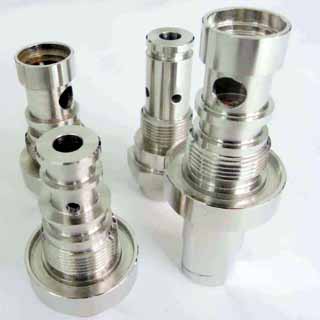
UG flat milling module function, including multi-pass contour milling, profile milling, Z-shaped milling tool path, a predetermined safety margin for avoiding clamps and moves inside, Provides layered cutting function of the cavity and processing of islands on the bottom of the cavity.
Defines the boundary and wool geometry, displays the boundaries of the uncut area, and provides instructions for operating the machine to assist in motion, such as cooling, tool compensation, and clamping.
(2) UG/Core & Cavity Milling
Using UG core, cavity milling can complete roughing single or multiple cavities, It is possible to remove large-margin roughing along the shape of any similar core. Create tool movement trajectories for very complex shapes and determine the cutting method. Milling tolerance tolerances allow machining of low-precision designs with gaps and overlaps between curved surfaces, and the number of curved surfaces that make up the cavity can reach hundreds. When it is found that the profile is abnormal, it can be corrected either by itself or within a user-defined tolerance.

(3) UG/Fixed AxisMilling
UG fixed-axis milling module functions, including generating 3-axis linkage machining tool path function, machining area selection function, a variety of drive methods and pass methods are available, such as edge cutting, radial cutting, spiral cutting, and user-defined cutting. Along the boundary driving mode can be selected concentrically and radially, a variety of tool path pattern, provide upmilling, down milling control and screw feed, automatically identify unprocessed areas and steep areas that were not removed by the previous process so that users can further clean these areas.
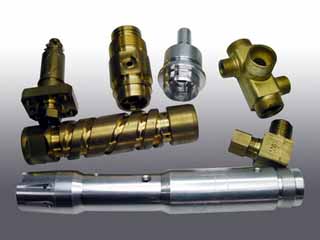
(4) UG/Flow Cut
Automatically find the area on the part to be machined that satisfies the “double-cut condition”, which is generally the root zone and corner in the cavity. The user can directly select the machining tool. The UG/Flow Cut module will automatically calculate the "double-cut condition" area corresponding to the tool and use it as the drive geometry to automatically generate a root removal program for one or more passes. When the core or cavity of complex processing occurs,this module reduces the amount of finishing or semi-finishing work.
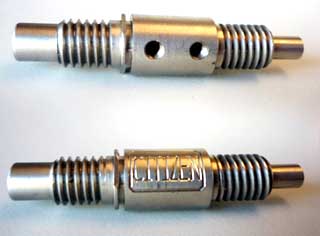
(5) UG/Variable Axis Milling
Variable-axis milling module supports fixed-axis and multi-axis milling functions, can process any geometry generated in the UG modeling module, and maintain the relevance of the main model. The module provides 3 to 5 axis milling functions validated over many years of engineering use, providing tool axis control, tool selection, and tool path generation.
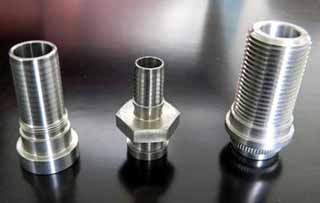
(6) UG/Sequential Milling
The UG sequential milling module can achieve the following functions: Controls each step of the toolpath generation process, supports milling programming from 2 to 5 axes, and is fully related to the UG master model. Absolute control, like APT direct programming, can be obtained in an automated manner, allowing the user to interactively generate toolpaths from section to section and maintain control of each step in the process. It provides a cycle function that allows the user to define only the innermost and outermost toolpaths on a surface, and the module automatically generates intermediate steps. This module is a unique module in the UG CNC processing module, such as automatic root removal and other functions, and is suitable for difficult CNC programming.
(7) High Speed Milling Support
The system provides the same level of layered processing used in high-speed milling applications, in the corner of the transition in the form of rounded corners to avoid the 90 ° sharp turn (high-speed occasions on the rails and the motor is easily damaged), while the use of spiral advance and retract the knife, the system also provides a round A variety of ways to support high-speed machining tool path generation strategy.
[3] Tool Shaft Driving Method
The processing of the space surface axis involved more, especially in the five-axis machining. When performing five-axis machining, it involves key techniques such as machining of the guide surface, interferometric surface, trajectory limiting area, advance/retract knife, and tool axis vector control. One of the key technologies for machining four-axis and five-axis machining is to understand the change of the vector of the tool axis (axis vector of the tool axis) in space. The vector change of the tool axis is achieved by swinging the swing of the table or the spindle. For fixed-axis milling applications where the vector does not change, products can generally be machined using three-axis milling.
[4] Editing the tool path
The module can observe the movement of the tool along the trajectory in a graphical manner and carry out graphical modification. It has the function of copying, editing and modifying the tool position file, defining the functions of the tool, machine tool and cutting parameter database (such as extending or shortening the tool path). Modifications, etc., can be flexibly customized, tailored, etc. according to user needs.
[5] machining simulation
The cutting simulation module UG/Vericut is a third-party module integrated in the UG software. It uses human-computer interaction to simulate, verify, and display NC machining programs. It is a convenient method for verifying NC programs. Due to the elimination of the steps of test sample cutting, machine tool debugging time can be saved, tool wear and machine cleanup can be reduced. By defining the blank shape of the cut part, the NC tool file data is called, It is then possible to verify the correctness of the tool path generated by the NC. UG/Vericut can show the processed and colored part model, and the user can easily check out the incorrect processing conditions. As another part of the inspection, the module can also calculate the volume of the processed part and the removal amount of the blank, so it is easy to determine the loss of raw materials. Vericut offers a number of functions, including full graphic display of blank size, position and orientation, which simulates milling and drilling of 2 to 5 axes.
[6] post processing
The most important thing for post-processing is to translate the tool path generated by CAM software into an NC program suitable for NC system processing. By reading the tool location file, coordinate motion conversion and command format conversion are performed according to the machine motion structure and the control instruction format. It contains the aspects of machine coordinate motion transformation, nonlinear motion error check, feedrate check, NC program format conversion, and NC program output. The main content of post-processing includes three aspects:
(1) CNC system control command output: It mainly includes the control of machine type and machine configuration, positioning of the machine tool, interpolation, spindle, feed, pause, cooling, tool compensation, fixed cycle and program head and tail output.
(2) format conversion: including data type conversion and round, string processing, etc., mainly for the control system output format, such as the unit, the output address characters and other aspects of control.
(3) Algorithm processing: It mainly deals with coordinate transformation, cross-quadrant processing, and feed speed control during multi-axis machining.
UG's post-processing processing module allows users to easily create their own post-processing processing program. This module is applicable to almost all mainstream NC machine tools and machining centers in the world. It has been proven in many years of application practice to be applicable to the milling of 2 to 5 axes or more, 2 to 4 axes of turning and WEDM. The UG/Nurbs Path Generator spline trajectory generator module allows the generation of tool trajectory data based on Nurbs splines directly in the UG software. The resulting trajectory has a higher precision and smoothness, and the processing program volume is reduced by 30% to 50% compared to the standard format.
【7】Cutting parameter library design
The system library can be used to obtain data of machine tools, cutting tools and their materials, parts materials, cutting process methods, spindle speed and feed rate, define standardized tool library, processing parameter library, and make rough machining, semi-finishing, finishing, etc. Standardization of commonly used operating parameters to reduce the use of training time and optimize the machining process, provide storage tool and cutting data and standard tool command database. Users modify the data in the library to meet the needs of the company.
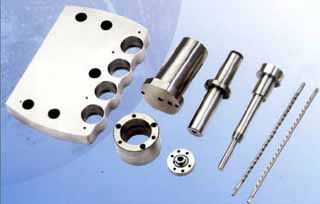
The Unigrahics NX/CAM CNC machining module consists of the following important components: 3D modeling, tool path design, tool path edit modification, machining simulation, post processing, CNC programming templates, cutting parameter library design, and secondary development function interfaces.
[1] CNC programming template
Unigraphics NX system provides basic NC programming templates, users can also create their own program, rough finishing, tools, products and other types of programming templates according to the company's experience. Before using the template, it is necessary to organize and collect the templates of different processing methods for different product parts. In the creation of the template can be classified according to processing methods, for series or similar processing technology, such as convex and concave mold parts processing. It can also include complete machining process templates such as rough finishing programs, tool selection, and process parameters.
[2] Generation of Tool Trajectory
The system provides drilling programming, tapping and boring and other point processing programming modules. With a variety of contour processing, Equal high ring cut, stroke milling, and island processing, such as milling milling programming functions.
The 3 to 5 coordinates of the complex surface provided by the fixed axis and variable axis machining programming function, you can arbitrarily control the vector direction of the tool axis, Various tool path control methods such as surface contour, equal high stratification, parameter line processing, surface streamline, steep bevel and surface clear root.
(1) UG/Planar Milling

UG flat milling module function, including multi-pass contour milling, profile milling, Z-shaped milling tool path, a predetermined safety margin for avoiding clamps and moves inside, Provides layered cutting function of the cavity and processing of islands on the bottom of the cavity.
Defines the boundary and wool geometry, displays the boundaries of the uncut area, and provides instructions for operating the machine to assist in motion, such as cooling, tool compensation, and clamping.
(2) UG/Core & Cavity Milling
Using UG core, cavity milling can complete roughing single or multiple cavities, It is possible to remove large-margin roughing along the shape of any similar core. Create tool movement trajectories for very complex shapes and determine the cutting method. Milling tolerance tolerances allow machining of low-precision designs with gaps and overlaps between curved surfaces, and the number of curved surfaces that make up the cavity can reach hundreds. When it is found that the profile is abnormal, it can be corrected either by itself or within a user-defined tolerance.

(3) UG/Fixed AxisMilling
UG fixed-axis milling module functions, including generating 3-axis linkage machining tool path function, machining area selection function, a variety of drive methods and pass methods are available, such as edge cutting, radial cutting, spiral cutting, and user-defined cutting. Along the boundary driving mode can be selected concentrically and radially, a variety of tool path pattern, provide upmilling, down milling control and screw feed, automatically identify unprocessed areas and steep areas that were not removed by the previous process so that users can further clean these areas.

(4) UG/Flow Cut
Automatically find the area on the part to be machined that satisfies the “double-cut condition”, which is generally the root zone and corner in the cavity. The user can directly select the machining tool. The UG/Flow Cut module will automatically calculate the "double-cut condition" area corresponding to the tool and use it as the drive geometry to automatically generate a root removal program for one or more passes. When the core or cavity of complex processing occurs,this module reduces the amount of finishing or semi-finishing work.

(5) UG/Variable Axis Milling
Variable-axis milling module supports fixed-axis and multi-axis milling functions, can process any geometry generated in the UG modeling module, and maintain the relevance of the main model. The module provides 3 to 5 axis milling functions validated over many years of engineering use, providing tool axis control, tool selection, and tool path generation.

(6) UG/Sequential Milling
The UG sequential milling module can achieve the following functions: Controls each step of the toolpath generation process, supports milling programming from 2 to 5 axes, and is fully related to the UG master model. Absolute control, like APT direct programming, can be obtained in an automated manner, allowing the user to interactively generate toolpaths from section to section and maintain control of each step in the process. It provides a cycle function that allows the user to define only the innermost and outermost toolpaths on a surface, and the module automatically generates intermediate steps. This module is a unique module in the UG CNC processing module, such as automatic root removal and other functions, and is suitable for difficult CNC programming.
(7) High Speed Milling Support
The system provides the same level of layered processing used in high-speed milling applications, in the corner of the transition in the form of rounded corners to avoid the 90 ° sharp turn (high-speed occasions on the rails and the motor is easily damaged), while the use of spiral advance and retract the knife, the system also provides a round A variety of ways to support high-speed machining tool path generation strategy.
[3] Tool Shaft Driving Method
The processing of the space surface axis involved more, especially in the five-axis machining. When performing five-axis machining, it involves key techniques such as machining of the guide surface, interferometric surface, trajectory limiting area, advance/retract knife, and tool axis vector control. One of the key technologies for machining four-axis and five-axis machining is to understand the change of the vector of the tool axis (axis vector of the tool axis) in space. The vector change of the tool axis is achieved by swinging the swing of the table or the spindle. For fixed-axis milling applications where the vector does not change, products can generally be machined using three-axis milling.
[4] Editing the tool path
The module can observe the movement of the tool along the trajectory in a graphical manner and carry out graphical modification. It has the function of copying, editing and modifying the tool position file, defining the functions of the tool, machine tool and cutting parameter database (such as extending or shortening the tool path). Modifications, etc., can be flexibly customized, tailored, etc. according to user needs.
[5] machining simulation
The cutting simulation module UG/Vericut is a third-party module integrated in the UG software. It uses human-computer interaction to simulate, verify, and display NC machining programs. It is a convenient method for verifying NC programs. Due to the elimination of the steps of test sample cutting, machine tool debugging time can be saved, tool wear and machine cleanup can be reduced. By defining the blank shape of the cut part, the NC tool file data is called, It is then possible to verify the correctness of the tool path generated by the NC. UG/Vericut can show the processed and colored part model, and the user can easily check out the incorrect processing conditions. As another part of the inspection, the module can also calculate the volume of the processed part and the removal amount of the blank, so it is easy to determine the loss of raw materials. Vericut offers a number of functions, including full graphic display of blank size, position and orientation, which simulates milling and drilling of 2 to 5 axes.
[6] post processing
The most important thing for post-processing is to translate the tool path generated by CAM software into an NC program suitable for NC system processing. By reading the tool location file, coordinate motion conversion and command format conversion are performed according to the machine motion structure and the control instruction format. It contains the aspects of machine coordinate motion transformation, nonlinear motion error check, feedrate check, NC program format conversion, and NC program output. The main content of post-processing includes three aspects:
(1) CNC system control command output: It mainly includes the control of machine type and machine configuration, positioning of the machine tool, interpolation, spindle, feed, pause, cooling, tool compensation, fixed cycle and program head and tail output.
(2) format conversion: including data type conversion and round, string processing, etc., mainly for the control system output format, such as the unit, the output address characters and other aspects of control.
(3) Algorithm processing: It mainly deals with coordinate transformation, cross-quadrant processing, and feed speed control during multi-axis machining.
UG's post-processing processing module allows users to easily create their own post-processing processing program. This module is applicable to almost all mainstream NC machine tools and machining centers in the world. It has been proven in many years of application practice to be applicable to the milling of 2 to 5 axes or more, 2 to 4 axes of turning and WEDM. The UG/Nurbs Path Generator spline trajectory generator module allows the generation of tool trajectory data based on Nurbs splines directly in the UG software. The resulting trajectory has a higher precision and smoothness, and the processing program volume is reduced by 30% to 50% compared to the standard format.
【7】Cutting parameter library design
The system library can be used to obtain data of machine tools, cutting tools and their materials, parts materials, cutting process methods, spindle speed and feed rate, define standardized tool library, processing parameter library, and make rough machining, semi-finishing, finishing, etc. Standardization of commonly used operating parameters to reduce the use of training time and optimize the machining process, provide storage tool and cutting data and standard tool command database. Users modify the data in the library to meet the needs of the company.






